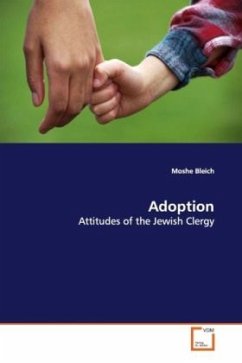Adoption is a widespread phenomenon, encapusulating
a variety of communities. With three percent of
children in the North American Jewish community
adopted, recent studies have begun to focus on the
public s attitude to various adoption arrangements.
Members of the clergy play a significant role in
providing support to members of the adoption
triangle. Utilizing assimilation theory, via
quantitative and qualitative research, this study
explores a large sample of Jewish clergy s attitudes
to adoption, while distinguishing opinions between
the different denominations of Jewish clergy. This
book also sheds light on the unique attitudes toward
the adoption of non-Jewish children by Jewish
parents. This book is of interest to anyone
concerned about adoption, be they members of the
adoption triangle, social workers, members of the
clergy, or researchers.
a variety of communities. With three percent of
children in the North American Jewish community
adopted, recent studies have begun to focus on the
public s attitude to various adoption arrangements.
Members of the clergy play a significant role in
providing support to members of the adoption
triangle. Utilizing assimilation theory, via
quantitative and qualitative research, this study
explores a large sample of Jewish clergy s attitudes
to adoption, while distinguishing opinions between
the different denominations of Jewish clergy. This
book also sheds light on the unique attitudes toward
the adoption of non-Jewish children by Jewish
parents. This book is of interest to anyone
concerned about adoption, be they members of the
adoption triangle, social workers, members of the
clergy, or researchers.








